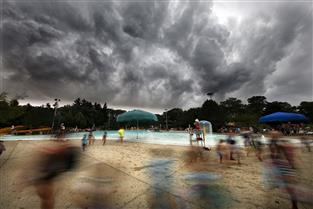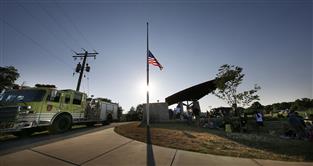Repair bill for Wauwatosa sewer system could be $84 million
Alternatives come with broad range of prices
Fixing sewer problems in East Tosa could cost as much as $84 million, consultants told the city's Budget and Finance Committee last week.
The area, which encompasses 5,000 households and 14,000 feet of sewer pipes, has experienced repeated basement backups during rainstorms and fails to meet standards set by Milwaukee Metropolitan Sewerage District.
Ideally only wastewater should enter the city's sanitary sewer system, but for myriad reasons - from leaky laterals and foundation drain connections on private property to leaky manholes or pipes on the public side - a lot of rainwater seeps in.
"This is pretty widespread in this basin," said David Perry, consultant with Brown & Caldwell, the firm hired by Wauwatosa to study basement flooding problems and develop strategies for mitigating the problems.
Decisions to be made
The approach taken to solve sewer issues will depend largely on whether the Common Council decides to tackle problems occurring on private property, City Engineer Bill Wehrley said. The possibility has been mentioned for months, but no policy decision has been made.
"It's the private side that's the sleeping giant that we can't ignore," Perry added.
Up to 75 percent of the problems come from private properties, so even perfectly operating public infrastructure won't be enough to stop backups.
The objective of sewer improvements is threefold: comply with the MMSD standard for a five-year recurrence event, protect basements from sewer backups in extreme weather and rehab existing structural system defects.
Consultants came up with a range of alternatives for meeting the objectives. All would accomplish the job, but each has a different price tag attached.
For $34 million to $39 million, the city could install bigger pipes and a storage tank. If the system fills, it would send the maximum amount of water allowed through to MMSD, store as much excess as possible to drain after the storm ends and bypass the overflow into local waterways. This only takes into account public infrastructure.
For $39 million to $40 million, the city could install bigger pipes and a storage tank and fix leaks in some private laterals.
For $62 million to $77 million, the city could install bigger pipes and fix a larger number of laterals and most foundation drains on private properties.
For $81 million to $84 million, the city could fix all laterals and foundation drains and install slightly bigger pipes.
More discussion to come
The cost outlines only call for Tosa dollars, but to make the changes work, Milwaukee would need to cooperate - about 21 percent of the area falls in the neighboring city.
Tests that sent dyed-water into the storm sewer to detect leaks into the separate sanitary sewer have provided a wealth of information about problem sources. But it's not enough data to make final decisions on how to address East Tosa flooding problems, Perry said.
Half the streets in the area don't have storm sewer pipes, so the next phase is soaker hose testing that will saturate private yards between houses and the sidewalk. Letters should go out shortly so the testing can take place this fall, Public Works Director Bill Porter said.
In the meantime, a discussion about fixing the city's sewers, of which the East Tosa portion is just a part, will continue at future committee meetings.
| Wauwatosa | Milwaukee | Total | |
| Area (acres) | 665 | 173 | 838 |
| Population | 10,000 | 2,000 | 12,000 |
| Households | 4,000 | 1,000 | 5,000 |
| Parcels, laterals | 3,200 | 800 | 4,000 |
| Sewer pipes (feet) | 11,000 | 3,000 | 14,000 |
More from News and Features
- Anodyne Coffee plans to open location in Wauwatosa Village
- Wauwatosa Meetings: Aug. 4
- Video: Wauwatosa girl's curbside ice cream stand raises money for the hungry
- Wauwatosa News and Notes: Hands-only CPR training offered; Firefly Art Fair is Aug. 6-7
- Wauwatosa Ask Now: Why are there barriers and fencing along the North Avenue bridges over the Menomonee River?
- Mystery Photo Contest: July 28
- Wauwatosa gears up for National Night Out event, this year at the zoo
- Election 2016: Wisconsin's 4th District candidates weigh in
- Wauwatosa's Luther Manor residents share smiles through flower delivery
- Wauwatosa Police Report: July 17-23














